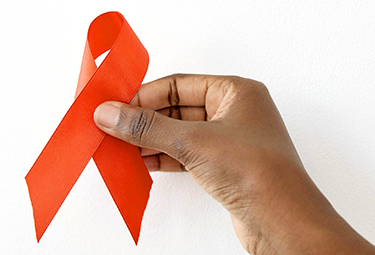Just six years after President Donald Trump’s first administration launched the Ending the HIV Epidemic in the U.S. initiative, Trump’s second administration has reversed course — which experts predict will have deadly consequences.
With canceled research grants, foreign aid cuts and gutting of workers and programs at federal health agencies, infectious disease experts say the Trump administration has done irreversible damage to HIV treatment and prevention in the U.S. and globally.
“We are on a fast track to undoing decades of progress and each new day seems to endanger our gains against this epidemic,” said Anna Person, MD, vice chair of the board of the HIV Medicine Association, during an April 1 news briefing.
On March 28, the Trump administration dismissed the entire staff of the Office of Infectious Disease and HIV Policy, which directed initiatives within the U.S. Department of Health and Human Services, such as the initiative to end the epidemic, and helps create national action plans on HIV/AIDS, viral hepatitis and sexually transmitted infections.
This week brought reports of staff cuts within the Centers for Disease Control and Prevention’s Division of HIV Prevention and the Health Resources and Services Administration’s Ryan White HIV/AIDS Program, which provides HIV care for low-income Americans. Losses of the programs mean lifetime care costs for people with HIV in the U.S. could escalate to $500,000.
Person said states will suffer under the cuts, particularly in the Southeast U.S., where she is a physician and professor of medicine at Vanderbilt University Medical Center’s Division of Infectious Diseases. Eliminating CDC’s Division of HIV Prevention alone could result in over 143,000 new HIV infections and 14,000 AIDS-related deaths by 2030, according to the Foundation for AIDS Research.
“What I want to convey is what I see every day sitting across from people living with HIV in my office,” Person said. “Daily, I see folks in tears worried that they will lose access to their HIV medications or their insurance should Ryan White or Medicaid be cut. Many people who have been living with HIV for decades are afraid we are returning to the 1980s era of HIV when many buried countless friends and loved ones.”
The administration’s Jan. 20 funding freeze on the U.S. Agency for International Development continues to harm HIV/AIDS programs around the world. USAID funding supported HIV antiretroviral treatment and prevention programs in over 50 countries under the President's Emergency Plan for AIDS Relief, which has prevented 26 million deaths. As of late March, USAID was on pace to be completely dissolved by the Trump administration.
“There are approximately 40 million folks living with HIV globally, and there are about 1.3 million new infections every year,” said Max Brito, MD, MPH, an infectious disease specialist and professor of medicine at the University of Illinois College of Medicine, during the media briefing. “Despite all the scientific advances in prevention and treatment for this disease, there are still more than half a million people dying every year of AIDS-related complications.”
According to KFF, 90% of international funding for HIV prevention and treatment programs in low- and middle-income countries is from the U.S., U.K., France, Germany and the Netherlands. However, the U.S. provides 73% of the funding. With aid cuts from the countries, there could be as many as 10.8 million new HIV infections and 2.9 million HIV-related deaths in children and adults by 2030, according to a study published in The Lancet HIV on March 26.
But even a temporary funding pause has devastating consequences.
“I can tell you for mother-to-child transmission, if the mother stops taking her antiretroviral drugs while she’s pregnant, the virus will rebound within weeks,” said Lynne Mofenson, MD, senior HIV technical advisor at the Elizabeth Glaser Pediatric AIDS Foundation, said during the briefing. “And it is the virus in the maternal blood that gets transmitted to the infant. So there’s a real danger there for transmission from mother to child very quickly.”
The Trump also administration canceled more than 230 HIV/AIDS-related National Institutes of Health research grants. One of those grants, Mofenson said, was in its third year of a seven-year study exploring the best ways diagnose, treat and prevent HIV in adolescents and young adults. Of the nearly 32,000 new HIV infections that occur each year in the U.S., 20% are in adolescents and young adults.
“HIV is still a problem here in the U.S. and around the world,” Mofenson said. “And we can basically stop transmission of HIV in youth if we get them diagnosed and treated with effective drugs.”
Even if political power shifts in Congress with mid-term elections in 2026, Person said it will take much longer than two or four years to restore what has been lost in both funding and international relationships.
“It’s not like a light switch that we can turn on and off,” Person said. “It took four decades to build this infrastructure with resounding success both in the U.S. and globally."
Photo by Darina Belonog, courtesy Pexels